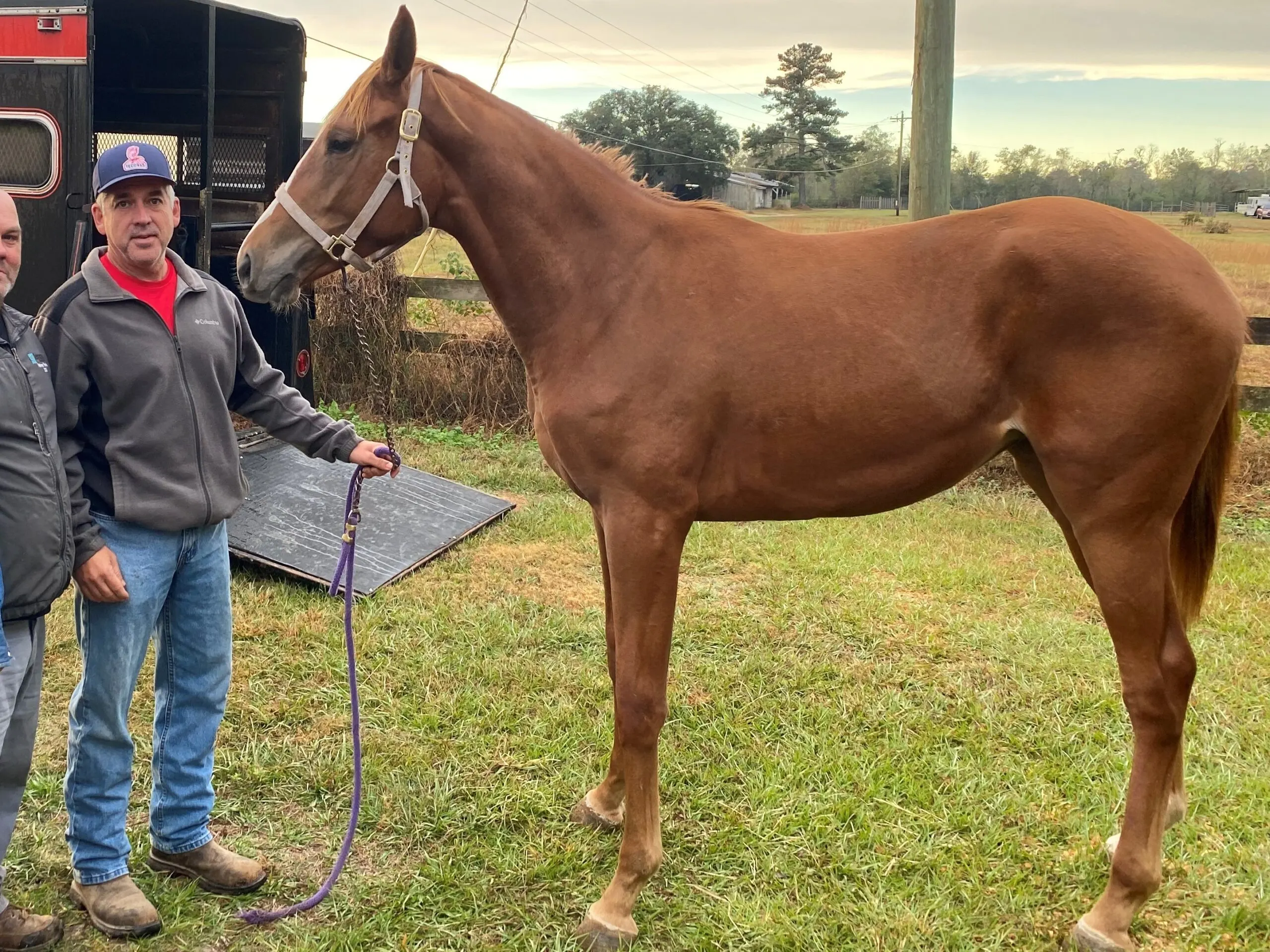Last updated: December 4, 2023
Any links on this page that lead to products on Amazon are affiliate links and I earn a commission if you make a purchase. Thanks in advance – I really appreciate it!
Have you ever heard the term “proud cut” and wondered what it means in the world of horses? Simply put, a proud cut horse is a gelding – a castrated male horse – that still shows behaviors typical of a stallion. This usually happens when the castration process doesn’t completely remove all the testicular tissue, leaving behind some that continue to produce testosterone.
Understanding proud cut horses is crucial for owners and handlers. It’s not just about knowing a term; it’s about recognizing and managing unique behaviors that can arise from this incomplete procedure. For those responsible for their care, grasping the concept of a proud cut horse is essential.
It helps in providing the right care and training, ensuring the well-being of the horse and maintaining a safe environment for everyone involved. Let’s delve into the intricate world of proud cut horses and explore what makes them distinct.
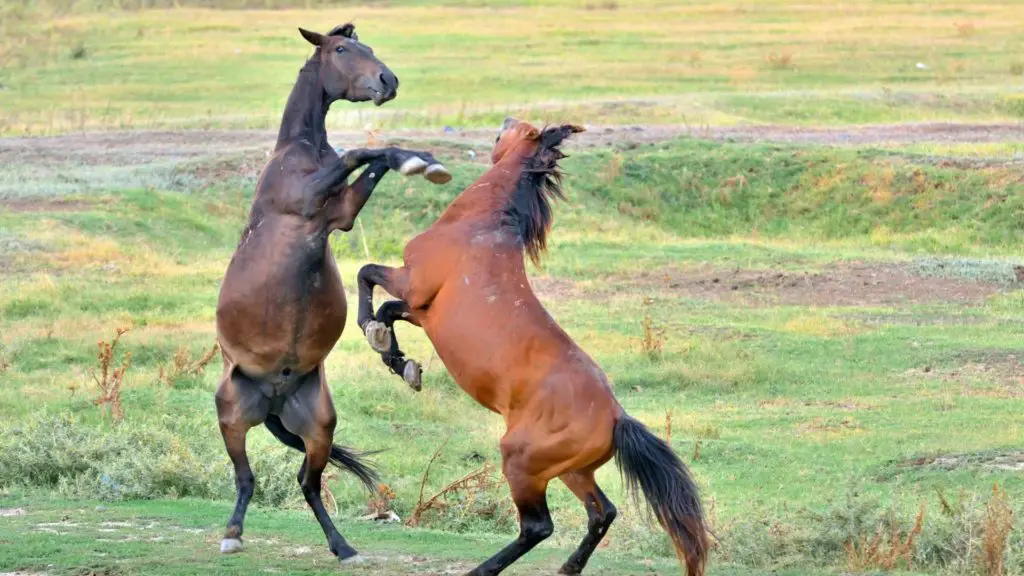
Quick Reference Table of Key Aspects Related to Proud Cut Horses.
| Aspect | Details about Proud Cut Horses |
|---|---|
| Definition | A gelded (castrated) horse that still exhibits some stallion-like behaviors due to incomplete removal of testicular tissue. |
| Behavioral Traits | – Aggression towards other geldings- Heightened interest in mares<br>- Territorial displays- Increased vocalizations |
| Physical Characteristics | – Possibly more prominent scrotal area- Muscular physique similar to stallions- Stronger scent in some cases |
| Health Considerations | – Regular veterinary check-ups- Monitoring for conditions like tumors or infections in retained testicular tissue |
| Training & Management | – Consistent and patient training- Special handling techniques for assertive behavior- Professional consultation as needed |
| Breeding Implications | – Generally infertile, but may exhibit mating behaviors- Separation from mares in heat recommended |
| Social Interactions | – May try to establish dominance- Careful introduction to new herds- Need for more space to reduce conflicts |
| Owner Responsibility | – Informed and adaptive care approach- Understanding unique behavioral and health needs- Ensuring a safe environment |
Deep Dive into Proud Cut Horses
The term “proud cut” has its roots deep in equestrian history, dating back several centuries. Originally, it was used to describe a specific scenario in horse castration. In the past, when a male horse was gelded – a process where the testicles are surgically removed to tame some of the more challenging stallion behaviors – sometimes, not all the testicular tissue was removed effectively.
This incomplete procedure led to the horse retaining some stallion-like characteristics, both in behavior and physicality. The term “proud” referred to the retained pride and assertiveness typical of a stallion, while “cut” was a direct reference to the act of gelding or castration.
Over the years, the understanding and usage of “proud cut” have evolved. Today, it’s more than just a term; it’s a crucial concept in equine management and veterinary medicine. Modern veterinary practices have advanced, but the occurrence of proud cut horses still exists, primarily due to surgical errors or unique anatomical challenges in some horses.
In contemporary equestrian circles, identifying a proud cut horse is important for several reasons. These horses can exhibit unpredictable behaviors, which can pose challenges in training, handling, and housing them, especially in mixed herds. Understanding that a horse is proud cut helps in adopting specific management strategies tailored to their unique needs.
The term now serves as a bridge between the past and present, reminding us of the evolving nature of equine care and the importance of precision in veterinary practices. For horse owners and handlers, recognizing a proud cut horse is vital for ensuring the well-being of these animals and maintaining a safe and harmonious environment in stables and farms.

Veterinary Insights on Proud Cut Horses
Veterinarians play a crucial role in identifying and managing proud cut horses. Their expert opinions shed light on the nuances of this condition. An equine veterinarian with over 20 years of experience explained to me that “Proud cut horses can be challenging due to the partial retention of male hormones. Which can lead to unpredictable behaviors, making management and training more complex.”
Veterinarians emphasize the importance of accurate diagnosis, which often involves hormonal testing to confirm the presence of residual testicular tissue.
Common Medical Issues Associated with Proud Cut Horses
Proud cut horses are susceptible to certain medical issues. These horses can exhibit increased aggression and libido, similar to stallions, which can lead to behavioral problems and conflicts within a herd. Additionally, there’s a risk of health complications related to the retained testicular tissue, such as tumors or infections. Regular veterinary check-ups are essential to monitor their health and address any issues promptly.
Case Studies and Real-Life Examples
Case Study 1: “Max,” a 6-year-old Thoroughbred, was identified as proud cut after exhibiting aggressive behavior towards other geldings. His owner, Sarah, worked closely with a veterinarian to manage his health and an equine behaviorist for behavioral training. Over time, Max’s behavior stabilized, demonstrating the effectiveness of a comprehensive management approach.
Case Study 2: “Duke,” a proud cut horse in a riding school, presented unique challenges. His trainer, John, noted, “Duke required specialized handling techniques, especially around mares.” With consistent training and careful monitoring, Duke became a valued member of the school, showcasing the adaptability of proud cut horses with proper management.
Interviews from Horse Owners and Equine Experts
Horse owner Emily shares her experience: “Realizing my horse, Charlie, was proud cut, explained so much about his behavior. Working with a vet and a behaviorist transformed our approach to his care.”
Racehorse trainer Kevin Thompson adds, “Understanding the psychology of proud cut horses is key. Tailored training strategies can significantly improve their behavior and integration into herds.”
These insights and real-life examples highlight the importance of recognizing and appropriately managing proud cut horses. They underscore the need for collaboration between veterinarians, behaviorists, and owners to ensure the well-being of these unique animals.

Training and Behavior Management for Proud Cut Horses
Training a proud cut horse requires a blend of patience, understanding, and specialized techniques. It’s crucial to establish a routine that incorporates both discipline and positive reinforcement. Consistency in training helps these horses understand expectations and boundaries.
A renowned horse trainer advised me to start with basic obedience and gradually introduce more complex commands. Always reward calm and compliant behavior to reinforce positive actions.
Techniques to Manage Aggressive or Dominant Behaviors
Aggression and dominance are common in proud cut horses due to residual testosterone. To manage these behaviors, it’s important to establish yourself as the leader in a firm but non-confrontational way.
Use controlled exercises like lunging to channel their energy and assertiveness positively. In situations where the horse becomes overly aggressive, techniques like redirection and distraction can be effective. It’s also beneficial to avoid situations that trigger dominant behavior, such as close proximity to mares in heat.
Healthcare and Regular Check-ups
Regular veterinary check-ups are vital for proud cut horses. These check-ups help in early detection and treatment of any health issues that may arise due to their unique condition. A veterinarian specializing in equine health stated, “Regular health assessments are crucial for proud cut horses. These check-ups can help in monitoring hormone levels and identifying any underlying health concerns early on.”
Specific Health Concerns to Monitor in Proud Cut Horses
Proud cut horses may face specific health challenges, including hormonal imbalances and related behavioral issues. There’s also a risk of conditions like testicular remnants becoming cancerous or causing infections. Regular monitoring of their overall health, behavior, and any changes in their physical condition is essential.
Diet and Nutrition
The nutritional needs of proud cut horses can slightly differ from other geldings due to their unique physiological makeup. They may require a diet that supports their higher energy levels and maintains their overall health.
A balanced diet for a proud cut horse should include quality forage, controlled grain intake, and adequate vitamins and minerals. It’s important to tailor their diet based on their activity level, age, and health status. Consulting with an equine nutritionist can provide personalized dietary recommendations. Regular monitoring of their weight and condition is also crucial to ensure they are receiving the right amount of nutrients.
In summary, managing and caring for proud cut horses involves a comprehensive approach that includes specialized training, regular healthcare, and a well-balanced diet. Understanding and catering to their unique needs can lead to a harmonious and healthy life for these horses.
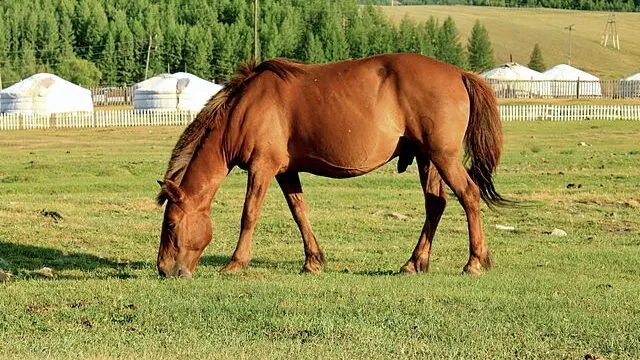
Common Myths about Proud Cut Horses and Factual Corrections
- Myth: Proud cut horses are as fertile as stallions.
- Fact: While proud cut horses may exhibit some stallion-like behaviors, their fertility is typically compromised. The incomplete castration usually leaves them infertile, although they may still show interest in mares.
- Myth: All proud cut horses are aggressive and dangerous.
- Fact: While some proud cut horses can exhibit increased aggression due to residual testosterone, this is not universal. Their behavior varies widely, and many can be trained and managed effectively to be well-behaved.
- Myth: Proud cut is always a result of a surgical mistake.
- Fact: While surgical errors can lead to a horse being proud cut, other factors like anatomical anomalies can also contribute. In some cases, a testicle may not have descended properly, making complete removal challenging.
Clarifying Misconceptions about Behavior and Fertility
- Behavior: Proud cut horses may display a mix of gelding and stallion behaviors due to partial hormone retention. However, with proper training and management, these behaviors can often be moderated.
- Fertility: Despite exhibiting some stallion-like behaviors, proud cut horses are generally infertile. The retained testicular tissue usually does not produce viable sperm due to the body’s higher internal temperature.
Frequently Asked Questions
What exactly is a proud cut horse?
A proud cut horse is a gelding that still exhibits some stallion-like behaviors due to incomplete removal of all testicular tissue during castration.
Can proud cut horses breed?
Generally, proud cut horses are infertile because the retained testicular tissue does not produce viable sperm.
Are proud cut horses always aggressive?
Not necessarily. While some may exhibit increased aggression, this varies from horse to horse. Many proud cut horses can be gentle and well-behaved with proper training and care.
How can you tell if a horse is proud cut?
Signs include stallion-like behaviors such as mounting, aggression, or interest in mares. A veterinary examination, including hormonal tests, can confirm the condition.
These answers are based on general veterinary knowledge and research in equine behavior. For specific cases, consulting with a veterinarian or an equine behavior specialist is always recommended for the most accurate information and guidance.
Understanding Cryptorchidism in Horses
Cryptorchidism is a condition where one or both testicles in male horses fail to descend into the scrotum. It’s a developmental issue often identified in young horses and can lead to stallion-like behaviors due to the retained testicle(s) still producing testosterone.
Key Points about Cryptorchidism:
- Types: It can be inguinal (near the groin) or abdominal (in the abdomen).
- Behavioral Effects: Horses with cryptorchidism may show increased aggression and sexual interest in mares, similar to proud cut horses.
- Health Risks: The condition increases the risk of testicular tumors and can cause discomfort or pain.
Managing Cryptorchid Horses:
- Diagnosis and Treatment: Involves physical exams, possibly ultrasound or hormonal tests, and often surgical removal of the undescended testicle(s).
- Post-Surgery Care: Essential for recovery, including regular veterinary check-ups.
- Training and Handling: Requires patience and specialized approaches due to potential stallion-like behaviors.
Understanding cryptorchidism is crucial for effective management and care, ensuring the health and well-being of affected horses.
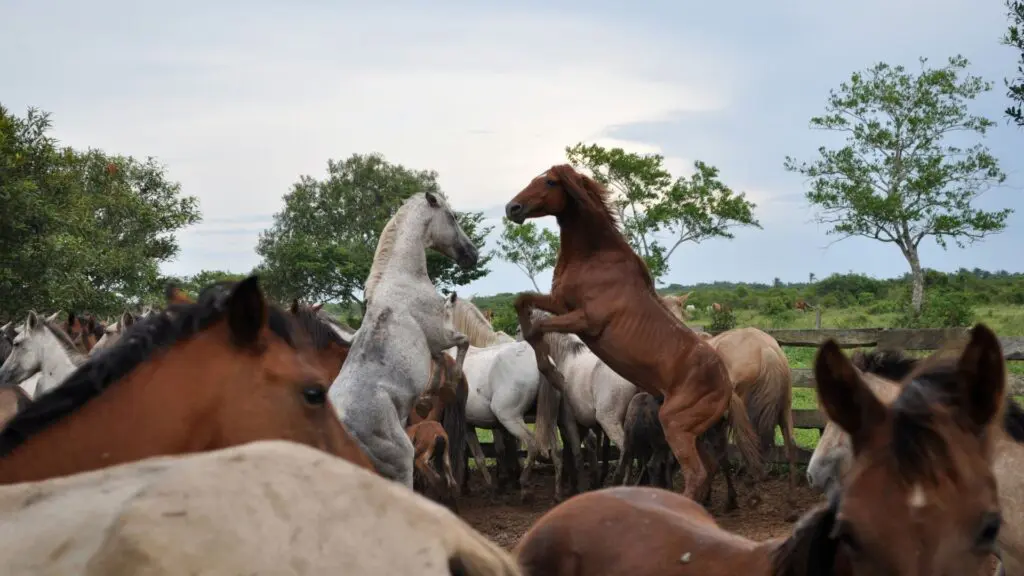
Why Are Some Horses Left Proud Cut?
There are a variety of reasons a horse might be left proud cut, each stemming from a combination of historical practices, cultural beliefs, and individual circumstances:
- Intentional Choice: Historically, some believed that leaving a bit of testicular tissue would enable the horse to retain a more muscular physique, or certain desirable behavioral traits of a stallion, without the full intensity of stallion behaviors.
- Cultural or Traditional Practices: In some cultures or equestrian traditions, the practice of leaving a horse proud cut is rooted in age-old beliefs or customs that may not necessarily align with modern veterinary science.
- Surgical Complications: In some instances, the anatomy of a particular horse might make complete castration challenging. Surgeons might opt to leave some tissue to prevent complications or because they believe they’ve removed all the essential tissue, only to discover later they hadn’t.
- Cryptorchidism stands out as a primary factor. If a veterinarian misses or is unable to extract the undescended testicle during castration, the horse can be left proud cut. The presence of this undescended testicle can continue to influence the horse’s behavior.
The Surgical Process and Its Intricacies
Castration, or gelding, is a surgical procedure that, when done correctly, removes both testicles of the horse, thereby eliminating the primary source of testosterone. The procedure itself can be performed in various ways:
- Open Castration: This involves making an incision into the scrotum and removing the testicles, with the wound typically left open to heal.
- Closed Castration: The testicles are removed, but the incision in the scrotal sac is sutured closed.
- Emasculators: These are tools used to crush and sever the spermatic cord.
Regardless of the method used, the goal is to remove all testicular tissue. However, complications can arise:
- Inadequate Removal: If any part of the testicular tissue is left, especially the part responsible for testosterone production, the horse can still display stallion-like behaviors.
- Misidentification: On rare occasions, what might appear as a small amount of residual tissue could be a significant portion of the testicle that retracts post-surgery, leading to a proud cut outcome.
Understanding the intricacies of the castration process and the potential for incomplete removal provides valuable context for horse owners, emphasizing the importance of post-operative observation and ensuring the intended behavioral and physiological outcomes are achieved.
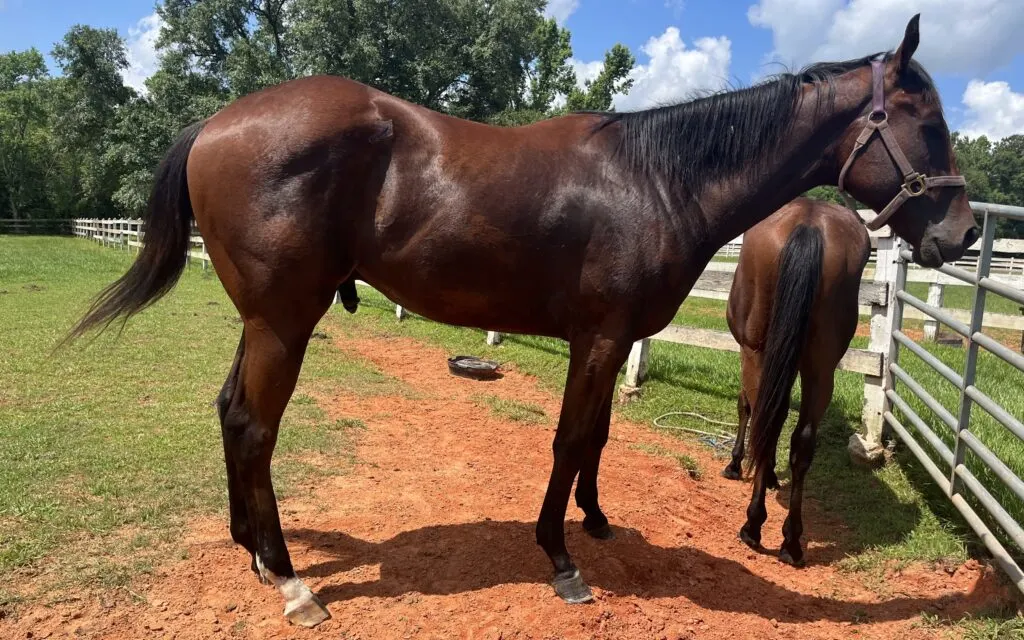
Traits and Behaviors of a Proud Cut Horse
Navigating the world of horse behavior, especially in males, can be a subtle art. It’s not always black and white when differentiating between a typical gelding and a proud cut horse. Understanding these nuances is essential for ensuring the welfare of the animal and the safety of those around it.
Let’s delve into the distinguishable traits and behaviors that can help horse owners and caretakers identify a proud cut horse.
Behavioral Signs
While geldings are typically more subdued than stallions, proud cut horses tend to display a blend of behaviors. Key behavioral signs to look out for include:
- Aggression: They might be more assertive or aggressive, especially towards other geldings.
- Interest in Mares: A heightened interest in mares, often resembling that of a stallion, may be observed. This includes sniffing, nickering, or even mounting.
- Territorial Displays: Proud cut horses might be more territorial about their space, food, or even humans they’re bonded with.
- Vocalizations: Increased vocal activity, especially around mares or when challenged by other horses.
Physical Indicators
Beyond behavior, some physical signs might hint at a horse being proud cut:
- Scrotal Size and Shape: Though they’ve undergone castration, proud cut horses might have a more prominent scrotal area than typical geldings due to the residual tissue.
- Musculature: A more muscular physique, reminiscent of stallions, might be observed in some proud cut horses.
- Scent: Some owners and trainers believe that proud cut horses have a stronger, more potent scent, similar to stallions, especially in their urine.
Veterinary Examinations and Confirmations
To be certain about a horse’s proud cut status, professional intervention is often required:
- Physical Examination: A veterinarian can palpate the scrotal area to determine if there’s any testicular tissue left.
- Hormone Testing: A blood test can measure testosterone levels. Elevated levels in a gelding can indicate the presence of testicular tissue.
- Ultrasound: An ultrasound can provide a visual confirmation of any residual testicular tissue in the scrotal area.
While there are evident signs that can point towards a horse being proud cut, a definitive diagnosis often requires a combination of behavioral observations and professional veterinary evaluations. For horse owners, being able to identify a proud cut horse ensures they can provide the appropriate care and environment for their equine companions.

The Unique Challenges of Owning a Proud Cut Horse
Owning a proud cut horse comes with its distinct set of challenges and considerations, both from a behavioral and breeding perspective. Equipping oneself with knowledge is essential for ensuring the horse’s welfare while also promoting harmonious interactions within a herd or stable setting.
Behavioral Challenges and Management
A proud cut horse can present various behavioral challenges, some of which are:
- Unpredictability: While they may not display the full range of stallion behaviors, the mix of gelding and stallion tendencies can lead to unexpected reactions, especially in new or stressful situations.
- Training Difficulties: The residual testosterone can make them more headstrong, possibly requiring more patience and consistency in training.
- Handling Precautions: Due to their sometimes assertive nature, handlers might need to employ specific techniques or equipment (like a stud chain) to ensure safety.
For effective management:
- Consistent Training: Regular and consistent training sessions can help in curbing undesirable behaviors.
- Professional Consultation: Seeking advice from equine behaviorists or trainers experienced with proud cut horses can be invaluable.
Breeding Considerations and Potential Issues
While proud cut horses are not typically fertile, some key considerations include the following:
- Reduced Fertility, Not Sterility: There’s a small chance they might still be fertile, especially if a significant amount of testicular tissue remains.
- Breeding Behaviors: Even if infertile, they might still try to mate with mares, potentially causing disruptions or even injuries.
- Mare Protection: It’s advisable to keep proud cut horses separated from mares in heat to prevent unwanted behaviors or confrontations.
Social Interactions with Other Horses
The unique hormonal makeup of proud cut horses can influence their social interactions:
- Dominance: They might try to establish dominance over other geldings or even challenge stallions.
- Integration Challenges: Introducing a proud cut horse to a new herd requires careful observation and gradual introduction to prevent clashes.
- Space Needs: Providing them with more space can reduce territorial disputes and aggressive confrontations.
Understanding these implications ensures that horse owners can provide the appropriate care, environment, and social structure for their proud cut horses, promoting harmony and well-being for all equine members of the stable.
Below is a YouTube video that shows a horse demonstrating “proud cut” behavior.
Conclusion
Proud cut horses have unique characteristics and needs, and understanding what makes them different – from their behavioral quirks to their specific health requirements – is crucial for anyone involved in their care.
Owning a proud cut horse is a commitment to understanding and adapting to these special needs. It’s about applying the knowledge we’ve discussed, from recognizing behavioral signs to providing the right kind of training and healthcare. This understanding is key to ensuring the well-being of these horses and fostering a positive environment for them.
As horse owners or caretakers, our role is to make informed, responsible decisions that benefit our equine companions. By doing so, we not only ensure the health and happiness of proud cut horses but also contribute to a more informed and caring equestrian community. Let’s continue to learn, adapt, and grow in our roles as stewards of these remarkable animals.
About the Author: Miles Henry
Miles Henry is an equine expert and writer with over 20 years of experience in horse care, training, and breeding. Miles is dedicated to understanding the nuances of equine behavior and welfare. His journey with horses began at a young age, growing up on a family ranch where he developed a deep connection with horses.
After completing his studies, Miles gained hands-on experience in managing various horse breeds and temperaments. Miles has also been actively involved in equine rescue operations, contributing his skills to rehabilitate abused and neglected horses. His commitment to horse welfare extends to educating others in responsible horse ownership and care.
As a writer, Miles combines his practical experience with extensive research to provide insightful and reliable information to horse enthusiasts. His articles, often featured on online platforms, cover a wide range of topics, from horse health to advanced training techniques.
In his current role, Miles continues to advocate for ethical horse management practices and shares his knowledge through writing and consulting. His deep understanding of horses, coupled with a commitment to continuous learning, makes him a trusted voice in the equine world.
Meet Miles Henry
An avid equestrian and seasoned racehorse owner, Miles Henry brings his extensive experience to the equine world, proudly associating with the AQHA, The Jockey Club, and various other equine organizations. Beyond the racetrack, Miles is an accomplished author, having published various books about horses, and is a recognized authority in the field, with his work cited in multiple publications.
🔗 Connect with Miles:
Twitter
Facebook
YouTube: Check out race highlights, horse care tips, and more!

